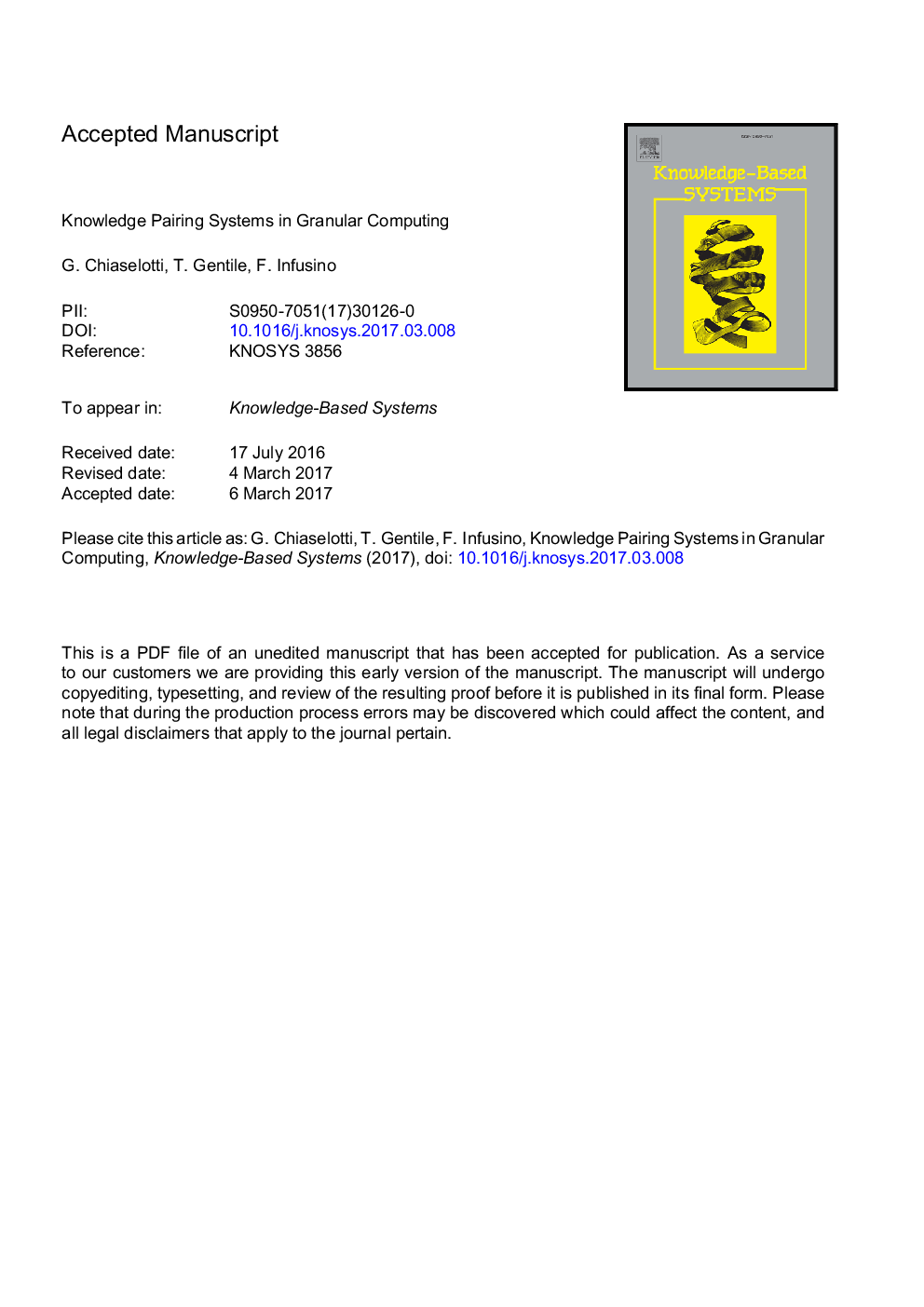| Article ID | Journal | Published Year | Pages | File Type |
|---|---|---|---|---|
| 4946192 | Knowledge-Based Systems | 2017 | 32 Pages |
Abstract
In Pawlak's theory of information systems, one has a collection of objects and knows the values of any object with respect a certain class of properties, usually called attributes. An implicit assumption of this theory is that the difference between the nature of objects and attributes is well outlined. In our paper we generalize the concept of information system by analyzing the case in which there is no a priori distinction in the nature of objects and attributes and, hence, both the interpretations are admissible. We call the structure arising in the previous context knowledge pairing system. We study the indiscernibility relations induced in both the admissible interpretations by means of up-down operators, in such a way to have a direct analogy with the extent and intent operators used in Formal Context Analysis. In particular, we investigate three models of knowledge pairing systems arising from real contexts and modeled respectively by graphs, digraphs and hypergraphs. We show the real convenience to use the notion of knowledge pairing system focusing on interpretation of this structure and discussing the two admissible perspectives obtained by avoiding the difference between the roles of objects and attributes.
Keywords
Related Topics
Physical Sciences and Engineering
Computer Science
Artificial Intelligence
Authors
G. Chiaselotti, T. Gentile, F. Infusino,
